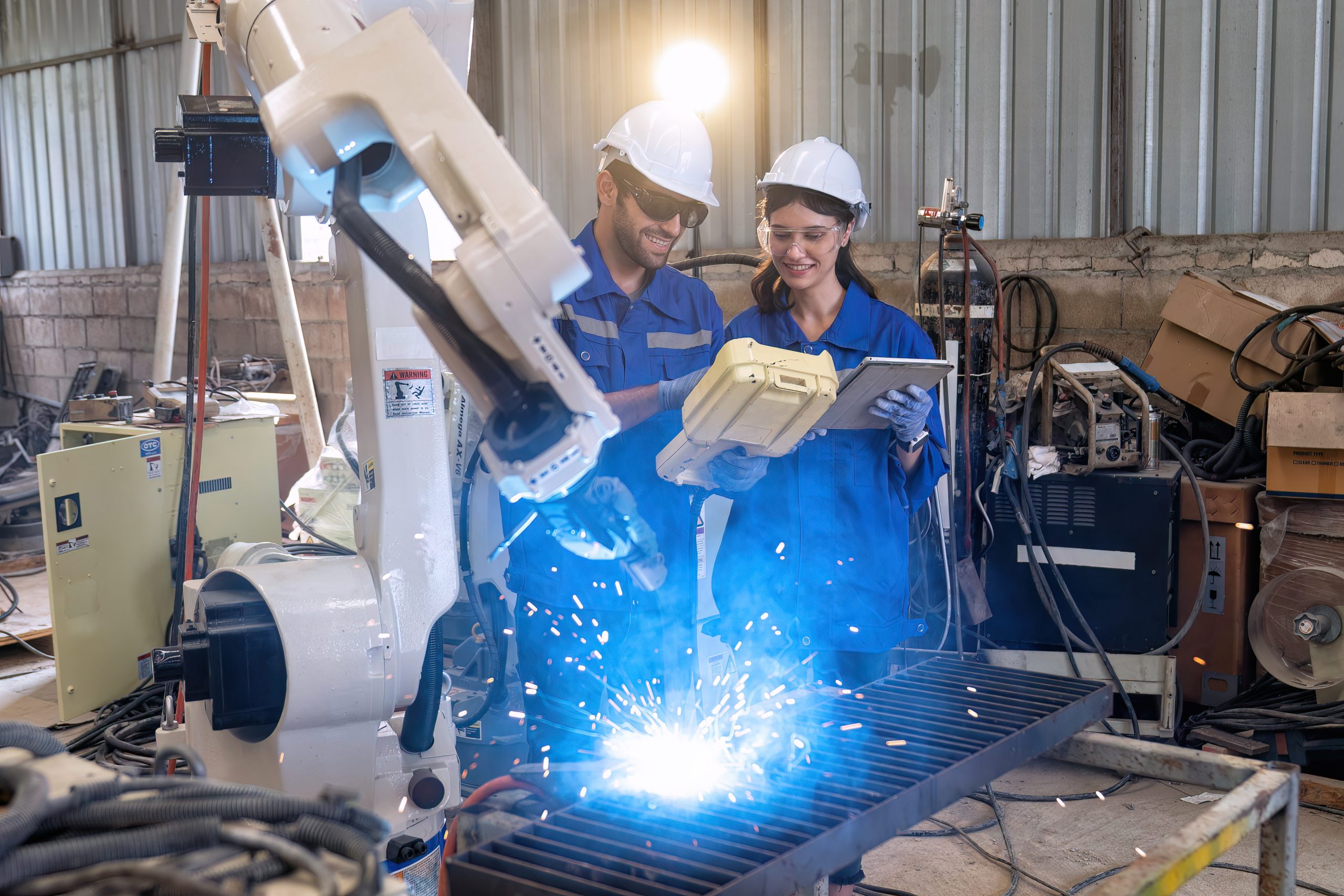How to Choose a Welding Cobot for Your Business

Using cobots for welding is helping companies work faster, safer, and more efficiently. Welding cobots, or Collaborative robots, are designed to work safely alongside people without large safety barriers. But not every cobot is right for every business. The right cobot boosts production, reduces labor, and improves weld quality.
Consider workspace, welding type, production needs, and integration when choosing one. This guide will help you understand what to look for, so you can pick a welding cobot that fits your business and helps it grow.
Factors to Consider When Choosing a Welding Cobot
When choosing a welding cobot, consider these key factors:
- User-Friendly Interface: Cobots should be easy to operate without advanced programming, allowing welders to control tasks via touchscreens or mobile devices.
- Task Flexibility: Choose cobots that can handle various welding methods, workpiece sizes, and production requirements, adapting easily to changing conditions.
- Easy Installation & Maintenance: Look for cobots that are quick to set up, easy to maintain, and supported locally, with modular designs for faster repairs.
- Stable & Precise Results: Ensure the cobot delivers consistent, high-quality welds with precision, supported by real-time monitoring, adaptive control, and proper tooling.
Benefits of Choosing the Right Welding Cobot
- Better Welding Accuracy
Welding cobots are designed for precise and consistent performance. They follow programmed paths exactly, reducing common errors such as uneven welds or slag buildup. This consistency minimizes material waste, lowers production costs, and ensures high-quality results. Reliable welds also help maintain product standards and satisfy customers.
- Higher Productivity
Cobots can perform repetitive welding tasks continuously without fatigue, boosting production speed and reducing downtime. Unlike human welders, who need breaks, cobots can operate almost nonstop. For example, in arc welding, a cobot can maintain up to 90% “arc-on” time, while a human welder averages around 30%. This efficiency allows factories to produce more in less time.
- Safer Work Environment
Welding involves hazards like high heat, bright arcs, and toxic fumes. Cobots take over these dangerous tasks, protecting human workers and reducing workplace injuries. This not only improves safety but also lowers costs associated with accidents. Human welders can then focus on tasks that require skill and judgment without putting themselves at risk.
Common Mistakes to Avoid When Selecting a Welding Cobot
When picking a welding cobot for your business, avoiding common mistakes can save time, money, and headaches. Here are three key points:
- Don’t choose just because it’s cheap.
The cheapest cobot might seem like a good deal, but it can cause problems later. Focus on long-term performance, reliability, and support. Consider the total cost, including training, setup, and future upgrades.
- Don’t skip training and integration.
Proper training and integration are essential for a cobot to work effectively. Select vendors that offer training and ongoing support to ensure your team can use the cobot safely and efficiently.
- Think about future growth and upgrades.
Plan for future growth by choosing a cobot that can be updated, reprogrammed, or expanded. This ensures it stays useful as your business and production needs grow.
Avoiding these mistakes helps you get the right cobot, improve efficiency, save money, and support your business growth.
Manual Welding vs. Cobot Welding
- Flexibility: Manual welding can handle many tasks and complex shapes, making it ideal for small batches. Cobots are moderately flexible and work best for low to mid-volume production.
- Production Volume: Manual welding works best for small amounts of varied products. Cobots are good for low to medium production levels, even when designs change frequently.
- Skill Required: Manual welding needs highly skilled operators. Cobots are easier to use and can be programmed with minimal training.
- Consistency & Quality: Manual welds can vary depending on the welder’s skill and fatigue. Cobots make accurate and even welds.
- Efficiency & Productivity: Manual welding is limited by human stamina and breaks. Cobots can work continuously, boosting productivity and reducing cycle times.
- Safety: Manual welding puts workers at risk from heat, bright arcs, and fumes. Cobots make work safer by doing the dangerous tasks while people can work nearby safely.
- Cost & Investment: Manual welding has lower initial costs but higher ongoing labor and rework costs. Cobots require a moderate initial investment but deliver faster ROI through efficiency and reduced waste.
- Applications: Manual welding is best for highly detailed work, complex assemblies, or hard-to-reach areas. Cobots excel at repetitive tasks, small to medium batch production, and maintaining consistent quality.
Practical Steps to Start the Selection Process
- Choose Cobots with an Easy-to-Use Interface
Modern welding cobots are designed to be user-friendly so that welders don’t need advanced programming skills. Many cobots allow operators to “teach” the robot tasks by manually guiding the arm through the desired movements. The robot records these actions and can repeat them precisely. Operators can also use touch screens or mobile devices to control the robot and set welding parameters like speed, voltage, or current. A simple interface saves time, prevents mistakes, and improves weld quality.
- Look for Flexibility
A versatile cobot can handle different welding tasks and adapt to changing production needs. Important factors include:
- Reach and Payload: Ensure the cobot can reach all areas of the workpiece and carry the welding equipment safely.
- Welding Methods: Check if it supports MIG, TIG, or spot welding, depending on your needs.
- Workpiece Size: The cobot should handle both small parts and larger components.
- Integration: The cobot should work smoothly with your existing setup so it can handle various products and small batch production without problems.
- Prioritize Easy Installation and Maintenance
Cobots should be quick and simple to set up, so production doesn’t stop for long periods. Some models are ready to operate within hours of unboxing. Maintenance is also critical:
- Support: Check if local technicians or vendor support are available.
- Routine Servicing: Look for cobots that are easy to service and maintain.
- Replacement Parts: Ensure parts are easily accessible.
- Modular Design: Cobots with a modular structure can be quickly repaired or upgraded. This minimizes downtime and ensures the system can quickly get back to operation if any component fails.
- Ensure Stable and High-Quality Results
Consistent weld quality is the main goal of using a cobot. Features to look for include:
- Precision and Repeatability: Cobots should perform each weld within ±0.1mm for uniform results.
- Adaptive Controls: Real-time monitoring can adjust parameters automatically based on changes in material or environmental conditions.
- Fixtures and End-of-Arm Tooling: Special holders and tools mounted on the robot’s arm securely hold the workpieces in place during welding. This stability allows the cobot to deliver precise, consistent welds, minimize errors, and reduce the risk of defects.
By carefully following these steps, you can select a welding cobot that improves efficiency, maintains high-quality standards, and integrates smoothly into your production process.






